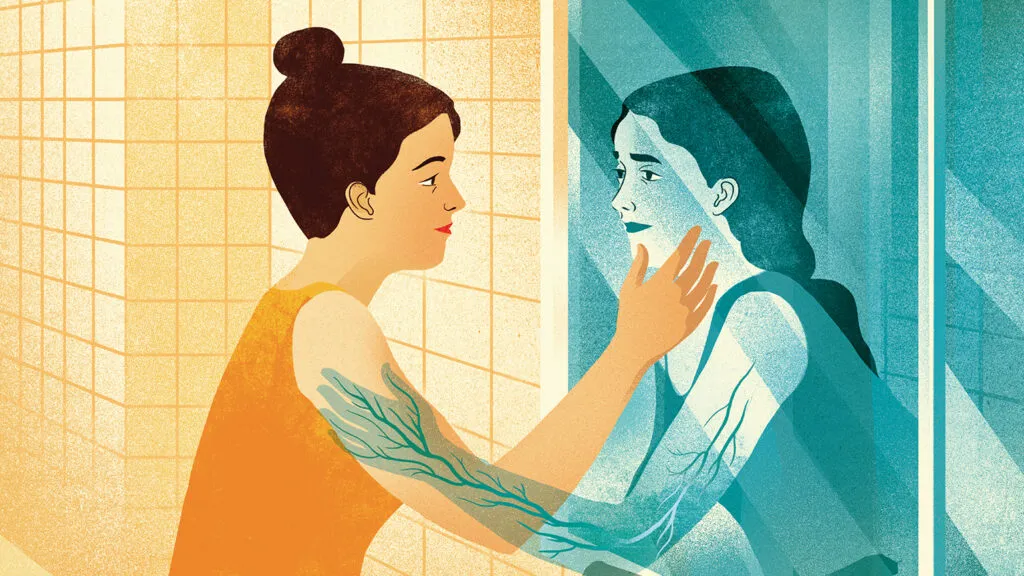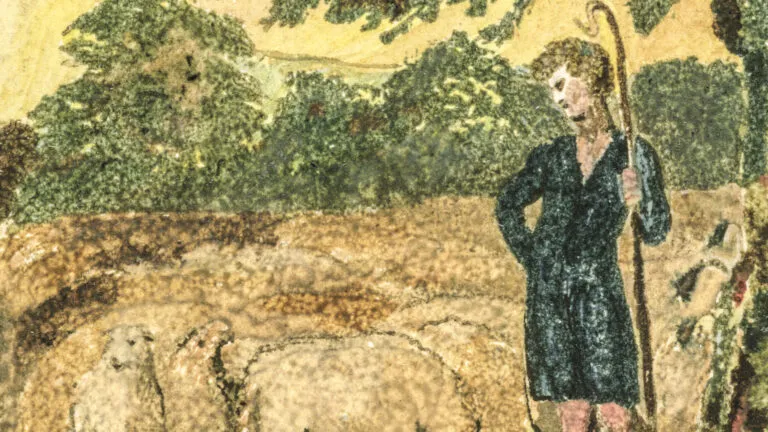I was frustrated. I’d been angry and irritable all day, but I couldn’t figure out why. It was my first semester of college in Massachusetts. Classes were going well. I was making friends. Still I couldn’t get out of my dark mood. I retreated to my dorm room and contemplated calling my mother in California. Before I could, the phone rang. It was Mom. “I’m having the worst day,” she said. She was frustrated, angry, irritable. And it hit me. I wasn’t upset because of anything in my life. I’d been feeling my mom’s feelings…from 3,000 miles away!
That experience fascinated me. But I labeled it a bizarre mother-daughter moment. Recently, however, I came across a story sent in by Mysterious Ways reader Diana McCulloch. “I believe I have a God-given ability to discern when something is wrong with one of my sons,” she wrote. Intrigued, I gave Diana a call. She recounted a story about her youngest son. She was watching television one night with her husband. Around 11 o’clock, she doubled over in pain. Stomach cramps. Strange because she hadn’t eaten anything out of the ordinary. The next morning, Diana called to check on her son, who was in recovery from drug addiction. That’s when she discovered he’d had a relapse the night before and ended up in the hospital. His stomach had been pumped. At 11 p.m.
“I knew, without any question,” Diana told me, “that I’d felt his pain.”
I got off the phone with Diana, stunned. Sure, sharing in the suffering of others is a hallmark of many of the world’s religious traditions. So it’s not completely surprising that many spiritual people are also empathetic. But is it really possible to experience another’s pain as if it’s your own? And if “sympathy pains” actually exist, what’s the point?
Most of the evidence for sympathy pain is anecdotal. Its most famous expression, couvade syndrome (i.e., husbands who pick up the pregnancy pains of their wives), is widely scoffed at. Then there’s the religious phenomenon of stigmata, or bearing Christ’s crucifixion marks on one’s body. Many saints have reportedly experienced them. Padre Pio, an Italian friar, most famously. A vision in a chapel left him with nail wounds in his hands and feet. The markings, which never healed, left him better able to understand Jesus’ pain, as well as that of others.
While cases like Padre Pio’s are rare, research from the University of Birmingham indicates it is possible to feel another’s pain beyond just sympathy. In 2009, psychologist Stuart Derbyshire had 123 undergraduates look at videos and photographs of people in pain. All the participants reported an emotional response to what they saw. About 30 percent, though, also felt physical symptoms, like stabbing sensations. MRIs confirmed they weren’t just imagining it—the images actually triggered the parts of the brain that process physical pain.
So could it be that some of us have a special ability to take on the suffering of others? Or do we all have the capacity to feel another’s pain? I took my questions to Dr. Joel Salinas, a neurologist at Harvard Medical School and the Massachusetts General Hospital and author of Mirror Touch. Synesthesia is a neurological condition that causes senses to get mixed and matched in the brain. Dr. Salinas has many forms of the condition, including mirror-touch synesthesia—he feels sensations he observes but in mirror opposites. “If I saw someone hit their right thumb, I would feel it in my left thumb,” he says. While scientists are still studying mirror-touch synesthesia, evidence suggests that empathy may be at the root of it.
“When those of us with mirror-touch synesthesia perceive touch or pain in someone else, our brains automatically try to recreate it vividly—based on past experience and context—as if it were literally happening in our own bodies,” Dr. Salinas says. “Our perceptions of our bodies and theirs might overlap. The boundary between self and other becomes blurred. That ‘shared body perception’ is thought to be tied to the same parts of the nervous system that are responsible for empathy.”
Although mirror-touch synesthesia affects just two out of every 100 people, “the brain’s mirroring system linked to empathy is present in everyone,” he says.
“People with mirror-touch synesthesia fall on the extreme end of the spectrum—they can pick up on information that’s hard to notice yet still perceivable,” Dr. Salinas says. “But we all have the hardware and software for that extreme type of empathy.”
That might explain how even complete strangers are able to pick up on each other’s pain. Take the experience of my Mysterious Ways colleague Kathi Rota. Years ago, Kathi visited an ashram in India. There she met a married couple. The husband was talkative. The wife was withdrawn, distracted. As they chatted, Kathi felt a sharp pain in her lower back. It disappeared the moment the couple walked away. The next day, Kathi learned the woman was battling pancreatic cancer.
But how are people able to experience one another’s distress across long distances? “We have 100 billion neurons and 100 trillion connections in our brain, constantly taking in information often below our conscious awareness,” Dr. Salinas says. “There’s always a possibility that there’s something going on outside the realm of what science can explore.”
That’s something Dr. Larry Dossey contemplates in his book One Mind. Dr. Dossey argues there’s a higher consciousness, or One Mind, that we are all able to tap into. He points to the story of identical twins Marta and Sylvia Landa. In 1976, Marta burned her hand on an iron and got a blister. At the same time, miles away, Sylvia also developed a blister—in the same shape and spot on her hand as Marta’s.
Dr. Dossey refers to these episodes of extreme sympathy pain as “telesomatic experiences.” He hypothesizes they’re a necessary part of the human experience, often driven by deep emotional bonds. They reveal we’re connected in ways that transcend physical barriers, even distance and time. “The common pathway in all One Mind moments is the experience of a hyperreal level of awareness, connection, intimacy and communion with a greater whole, however conceived…all of which is marinated in an experience of intense love,” Dr. Dossey writes.
That love appears to be at the heart of sympathy pain. Caterina Mako, the director of spiritual care and pastoral education at Catholic Health Services of New York, agrees that there’s a deeper spiritual dimension at work.
“There seems to be an intense love and connectedness within the relationship of those experiencing it,” she says. “The intensity of that connection is an example of God’s love for us.”
I thought back to Diana’s experience with her son, Kathi’s with a stranger and my own with my mom. Perhaps they weren’t moments of mere intuition or empathy, but a reflection of a greater love running through humanity. A glimpse at how connected we all truly are.





